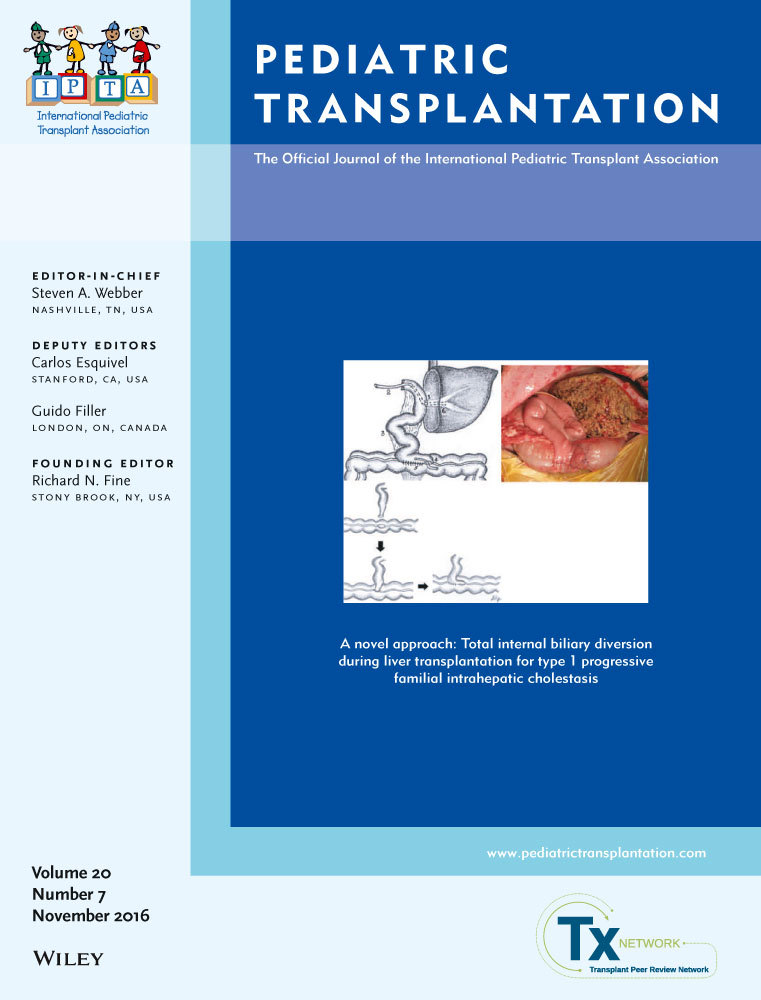A risk-stratified approach to cytomegalovirus prevention in pediatric solid organ transplant recipients
Abstract
Optimal strategies to prevent cytomegalovirus (CMV) disease following pediatric solid organ transplantation remain controversial. The purpose of this study was to review the outcomes of a risk-stratified strategy that uses a hybrid or prophylactic strategy for donor (D)+ recipient (R)− patients, a preemptive strategy for D+R+/D−R+, and clinical follow-up alone for D−R+ patients. A retrospective chart review was undertaken at the Stollery Children's Hospital in Edmonton, Alberta for pediatric solid organ transplants 2004 through 2010. Transplants were risk-stratified according to D/R CMV serostatus, organ group, and type of induction or rejection immunosuppression. The incidence of DNAemia and CMV disease and adverse effects from prophylaxis were analyzed. The study included 197 recipients. CMV DNAemia was detected in 49 of 197 recipients (24.8%), and CMV disease occurred in eight of 197 (4%) of which all but one were D+R−. All recovered. Seventeen of 142 recipients who received prophylaxis (12%) had hematologic toxicity. No other toxicities were identified. In conclusion, A risk-stratified approach resulted in very low rates of CMV disease with minimal adverse effects. Lowering the dosage rather than stopping antivirals in the face of neutropenia has the potential to further lower the rate of CMV disease.




